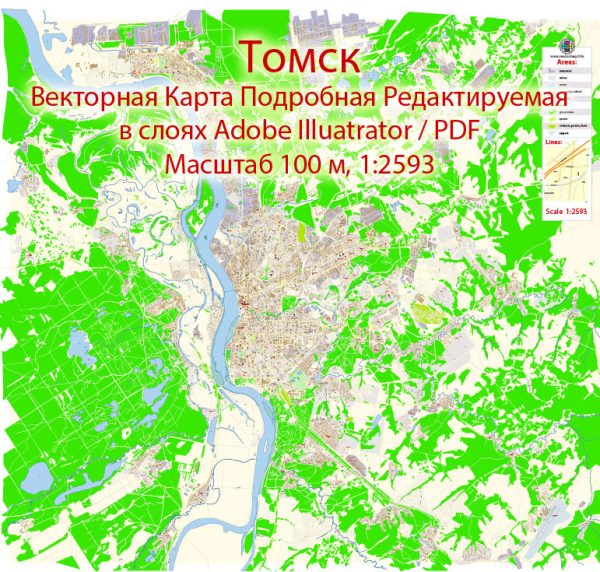Tomsk is one of the oldest cities in Siberia, Russia, with a rich history that dates back to the 17th century. The city’s development is closely tied to its geographical location, historical events, and cultural influences. Here is an overview of Tomsk’s history of urban development:
- Foundation and Early Settlements:
- Tomsk was founded in 1604 by Tsar Boris Godunov as a military outpost to defend Russia’s eastern territories against the nomadic peoples of Siberia.
- The city’s location on the Tom River facilitated trade and communication between Siberia and the rest of Russia.
- Role in Siberian Development:
- Tomsk played a crucial role in the development of Siberia as a center for trade, administration, and cultural exchange.
- As the Russian Empire expanded eastward, Tomsk became a significant administrative and economic hub, attracting merchants, settlers, and intellectuals.
- Educational and Cultural Center:
- In the 19th century, Tomsk emerged as a major educational center in Siberia. The establishment of Tomsk State University in 1878 contributed to the city’s intellectual and cultural growth.
- The city’s architecture from this period reflects a mix of styles, including Siberian wooden buildings and more elaborate stone structures.
- Industrialization and Growth:
- The late 19th and early 20th centuries saw industrialization in Tomsk, with the development of manufacturing, mining, and other industries.
- The Trans-Siberian Railway, completed in the early 20th century, further connected Tomsk to the rest of Russia and stimulated economic growth.
- Soviet Era:
- The Soviet period brought further industrial development to Tomsk. The city played a role in scientific research, education, and military production.
- During World War II, many enterprises were relocated to Tomsk to protect them from potential German invasion.
- Post-Soviet Era:
- Like many cities in Russia, Tomsk faced economic challenges in the post-Soviet era. However, it managed to adapt to new economic realities and focused on developing its scientific and technological sectors.
- Tomsk became known as the “Siberian Silicon Valley” due to its concentration of high-tech industries and research institutions.
- Preservation of Historical Heritage:
- Tomsk has made efforts to preserve its historical and architectural heritage. The city has several well-preserved wooden houses, churches, and buildings from the 19th and early 20th centuries.
- The city’s historical center has been designated a cultural heritage site.
- Modern Development:
- Today, Tomsk continues to be a center for education, science, and technology. It is home to several universities, research institutes, and innovative businesses.
- The city has a mix of historic and modern architecture, reflecting its dynamic evolution over the centuries.
Tomsk’s history of urban development showcases its resilience, adaptability, and cultural significance in the context of Siberian and Russian history. The city has successfully blended its historical legacy with modern advancements.


 Author: Kirill Shrayber, Ph.D.
Author: Kirill Shrayber, Ph.D.